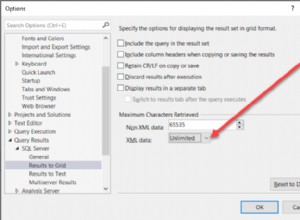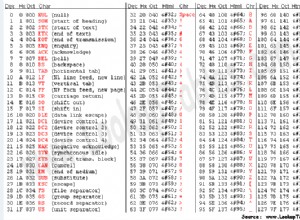Użycie zapytania Petera M do zbudowania tekstu SQL, a następnie wykorzystanie ciemnej mocy XML:
create table attributes (id, entity_id, table_name, column_name)
as
select 1, 3, 'VALUES_A', 'VALUE_1' from dual union all
select 2, 2, 'VALUES_B', 'VALUE_3' from dual union all
select 3, 2, 'VALUES_A', 'VALUE_2' from dual;
create table values_a (entity_id, value_1, value_2, value_3)
as
select 1, 'Monday', 42, 'Green' from dual union all
select 2, 'Sunday', 3000, 'Blue' from dual union all
select 3, 'Wednesday', 1, 'Black' from dual;
create table values_b (entity_id, value_1, value_2, value_3)
as
select 1, 'Tuesday', 26, 'Green' from dual union all
select 2, 'Saturday', 3, 'Red' from dual union all
select 3, 'Wednesday', 15, 'White' from dual;
Zapytanie:
with queries as
( select table_name, column_name, entity_id
, 'select '|| column_name || ' as c from ' || table_name ||
' where entity_id = ' || entity_id ||
case
when id = max_id then ''
else ' union all '
end as sqltext
from
( select a.*, max(a.id) over (order by id) max_id from attributes a ) )
select table_name, column_name, entity_id
, extractvalue(xmltype(dbms_xmlgen.getxml(sqltext)),'/ROWSET/ROW/C') as sql_result
from queries;
Wyniki:
TABLE_NAME COLUMN_NAME ENTITY_ID SQL_RESULT
---------- ----------- ---------- ---------------------------------------------------
VALUES_A VALUE_1 3 Wednesday
VALUES_B VALUE_3 2 Red
VALUES_A VALUE_2 2 3000




